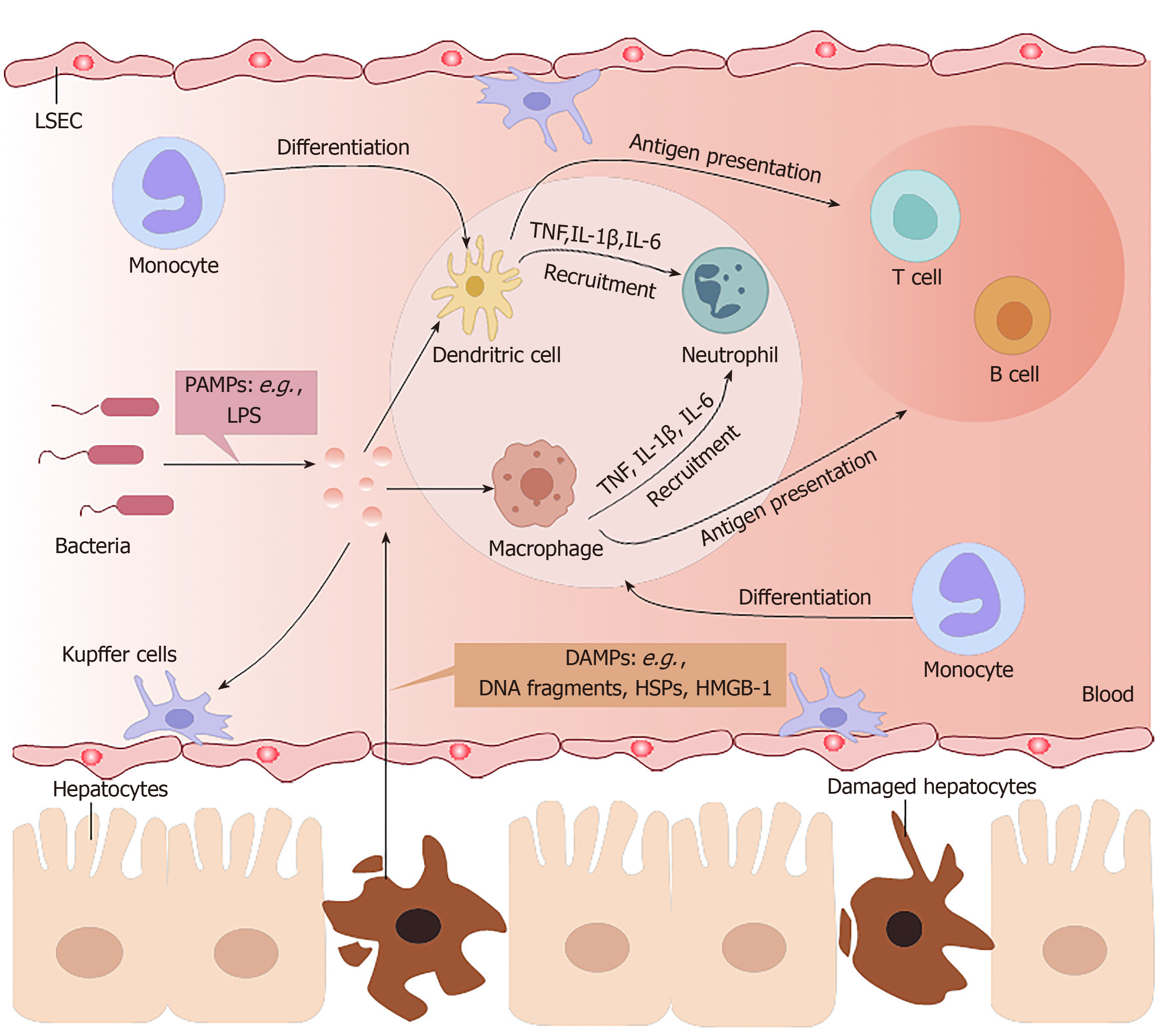Copyright
©The Author(s) 2021.
World J Stem Cells. Mar 26, 2021; 13(3): 208-220
Published online Mar 26, 2021. doi: 10.4252/wjsc.v13.i3.208
Published online Mar 26, 2021. doi: 10.4252/wjsc.v13.i3.208
Figure 1 Regulation of immune cells in response to chemically-induced acute liver failure.
Necrotic hepatocytes release many damage-associated molecular patterns (DAMPs), such as high-motility group box-1 (HMGB-1), DNA fragments, and heat shock proteins (HSPs), and pathogen-associated molecular patterns (PAMPs) from the blood can be identified by Toll-like receptors on innate immune cells. Proinflammatory factors recruit inflammatory immune cells, such as monocytes, into the liver. On the one hand, macrophages and dendritic cells are activated and produce tumor necrosis factor (TNF), interleukin (IL)-1β, and IL-6 to recruit more neutrophils to remove necrotic cell debris. On the other hand, the two types of antigen presenting cells can present antigens to T cells and B cells to activate acquired immunity. LPS: Lipopolysaccharide; LSECs: Liver sinusoidal endothelial cells.
- Citation: Zhou JH, Lu X, Yan CL, Sheng XY, Cao HC. Mesenchymal stromal cell-dependent immunoregulation in chemically-induced acute liver failure. World J Stem Cells 2021; 13(3): 208-220
- URL: https://www.wjgnet.com/1948-0210/full/v13/i3/208.htm
- DOI: https://dx.doi.org/10.4252/wjsc.v13.i3.208









